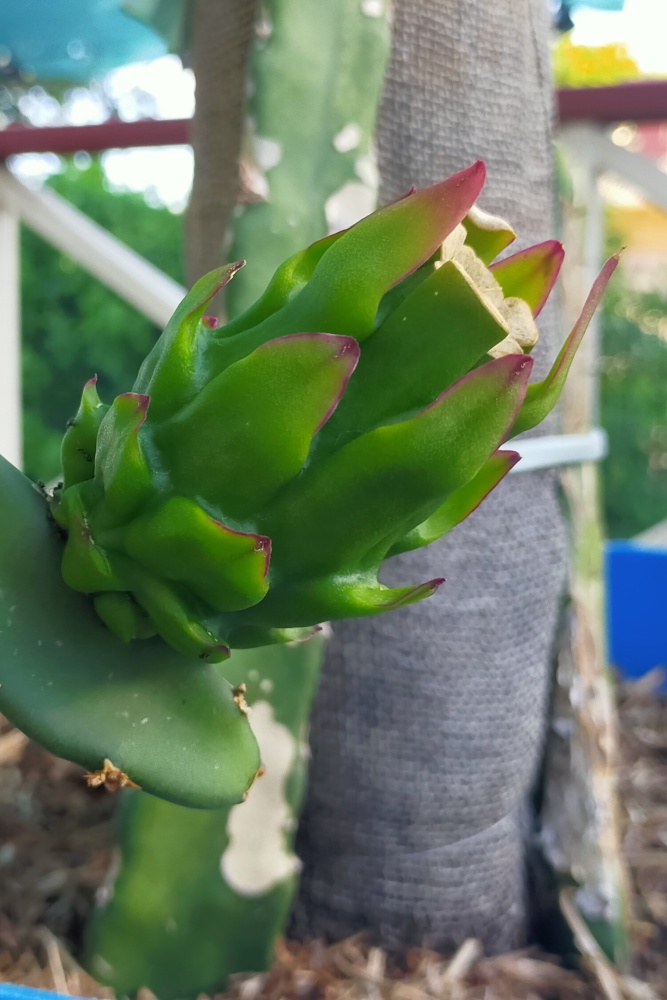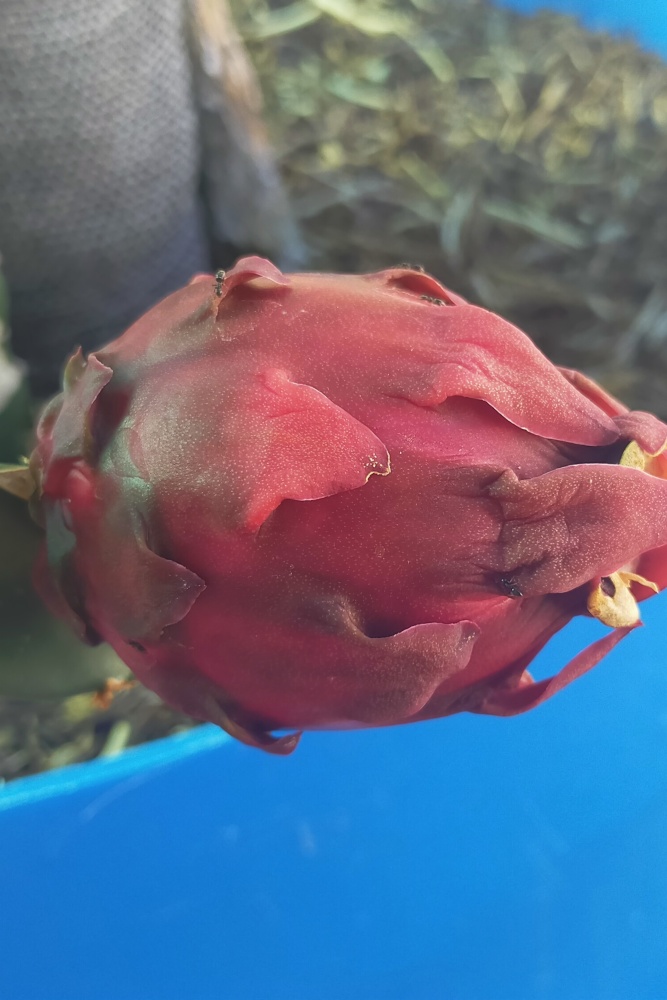Overview
H. guatemalensis × setaceus, cv. Sugar Dragon
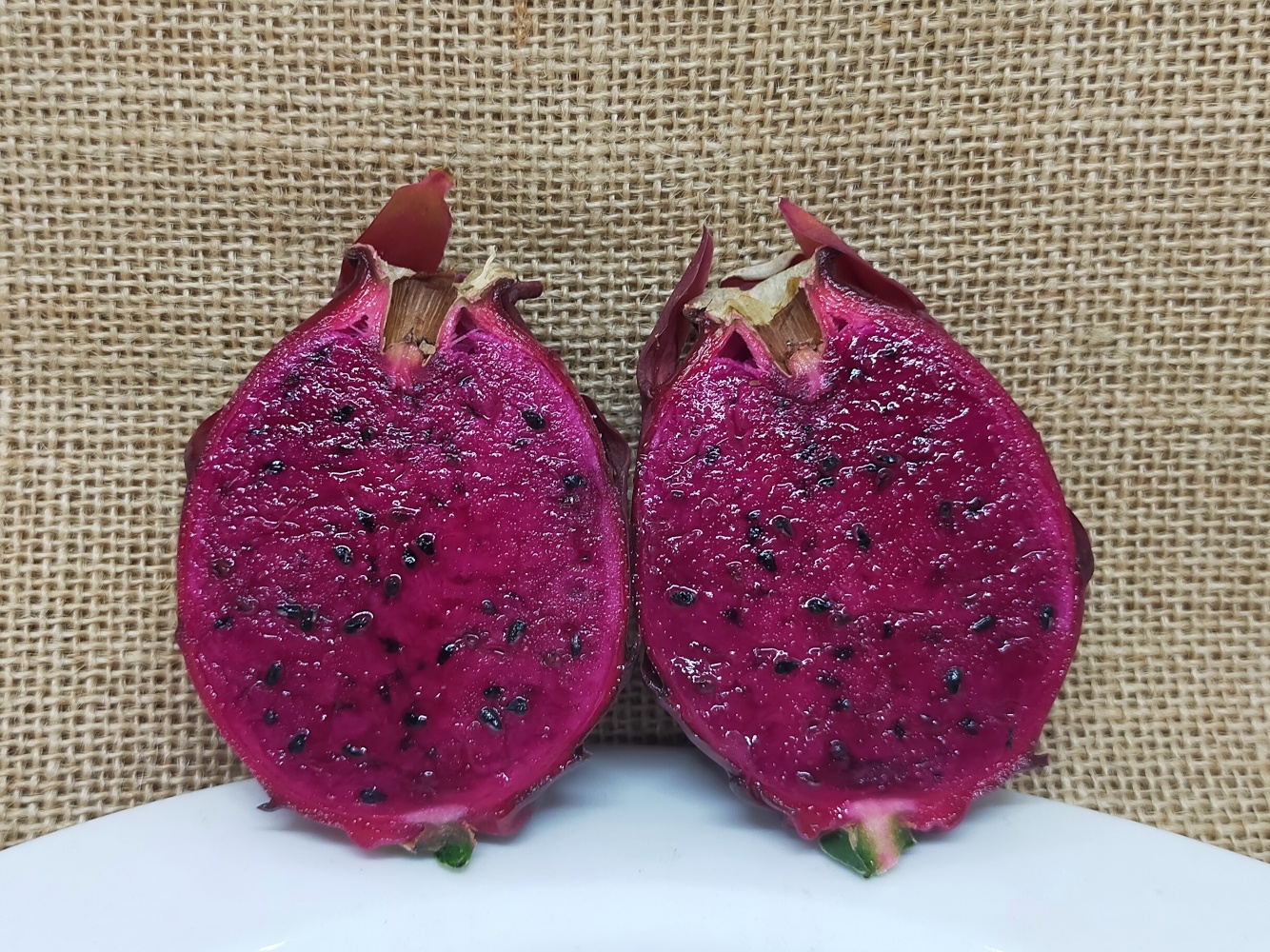
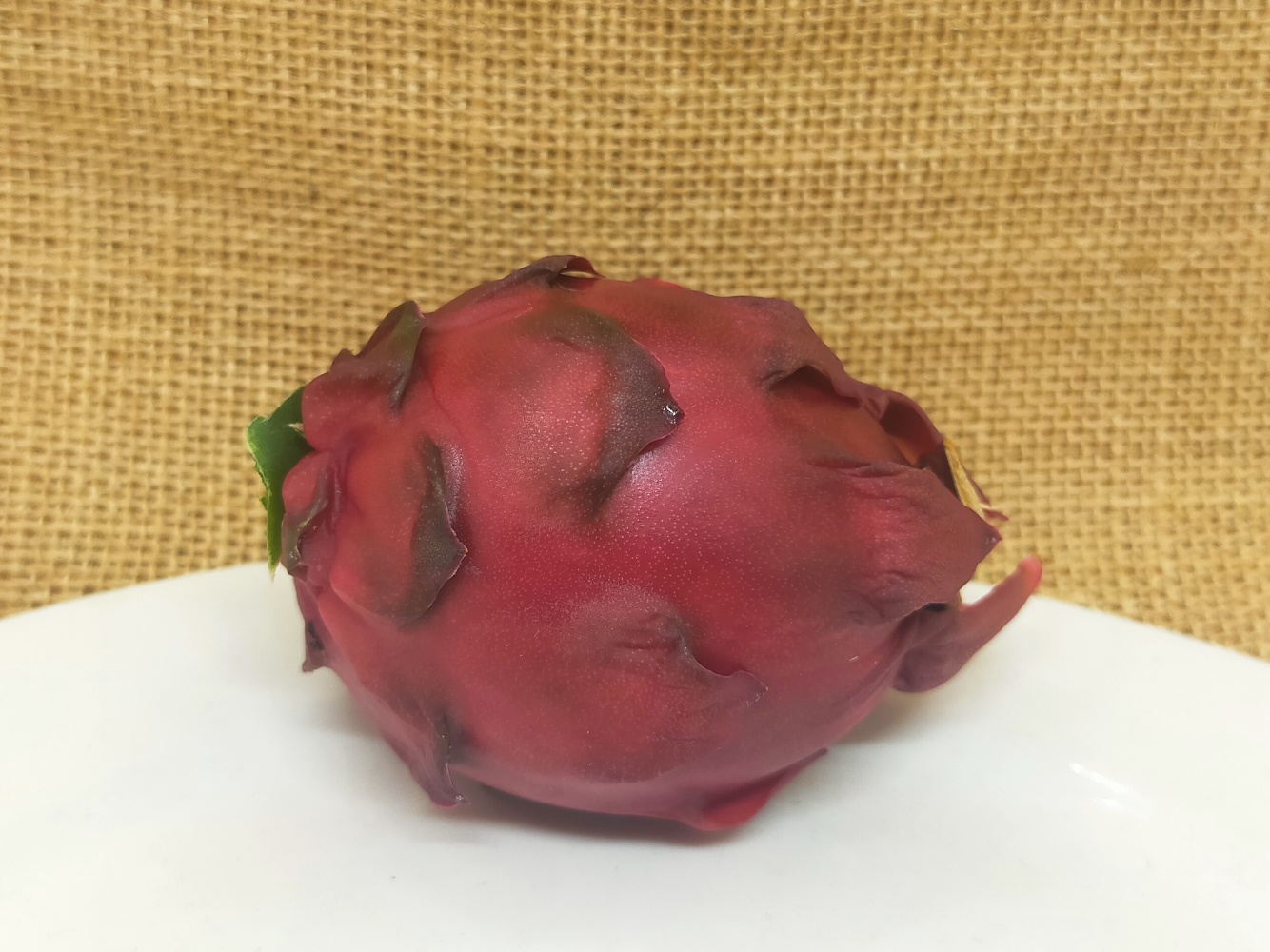
Other names: 8-S, Voodoo Child, Neon, Arizona Purple
Pollination: self-fertile
Sugar Dragon is one of the most sought-after varieties of dragon fruit due to its outstanding characteristics. It has thick, meaty growth; is self-fertile and produces an abundance of pollen that can be used on almost all other
dragon
fruit varieties; and has sweet, delicious fruit. The main drawback is the small fruit size, but this is compensated by high production and flavour.
This variety is the creation of Paul Thomson, who crossed Houghton (Hylocereus Setaceus) with Rixford (Hylocereus Guatemalensis) for his eighth seedling, 8-S. As the plant spread through the community, it was renamed numerous times
and
we have ended up with many varieties that resemble 8-S, the most well-known being Sugar Dragon. Perhaps some of them are seedlings of one another, but to simplify things I consider them the same.
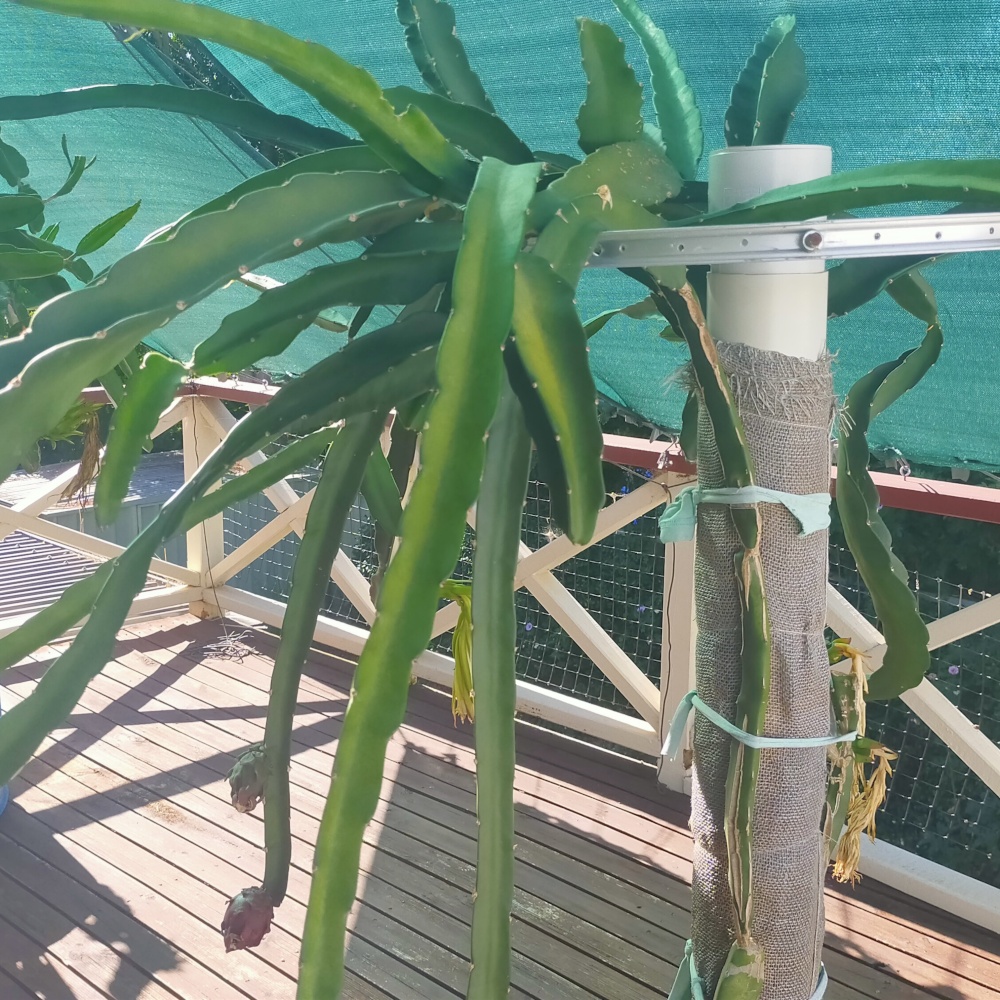
Buds
This variety is known to be both one of the earliest and one of the latest to bud, with the potential for new season’s buds with last season’s fruits. The buds begin as small “bulbs” with a distinct reddish tinge, before revealing bright green sepals rimmed with the reddish colour. Progress is slower than typical white and red varieties, but faster than megalanthus varieties, though this is certainly not an issue especially considering how early the buds can form.
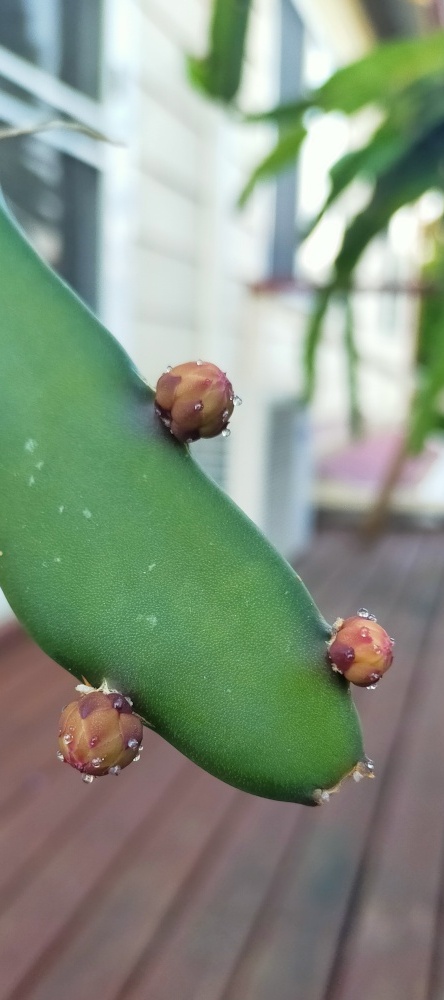
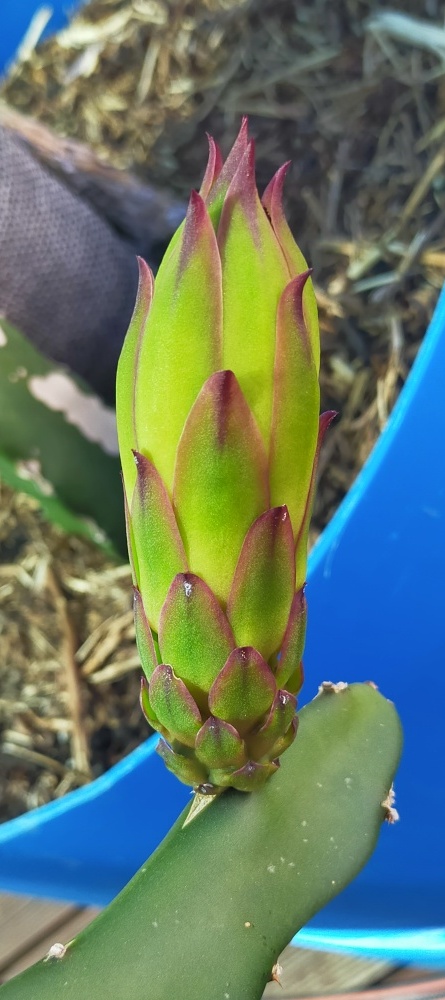
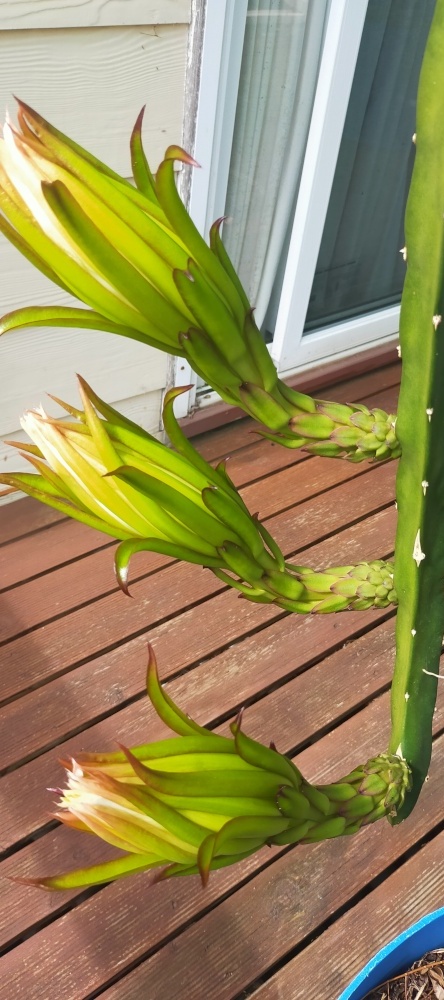
Flowers
Sugar Dragon produces large, brilliant white flowers with a yellow to orange tinge on the surrounding sepals. They are strongly scented and produce multitudes of pollen that can be used to cross pollinate most other varieties, to the point where some call it the “universal pollinator”. Some farmers put this to use by planting Sugar Dragon at regular intervals between their other dragon fruit plants, allowing the natural pollinators to do all the work. One thing to note is that the stigma protrudes well away from the anthers, so hand pollination is recommended.
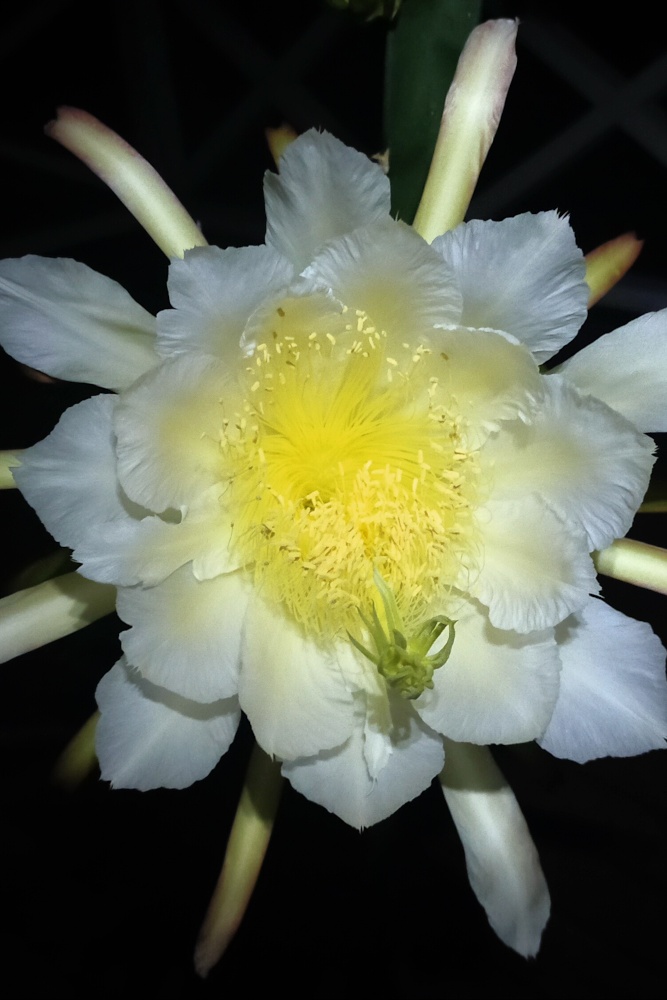
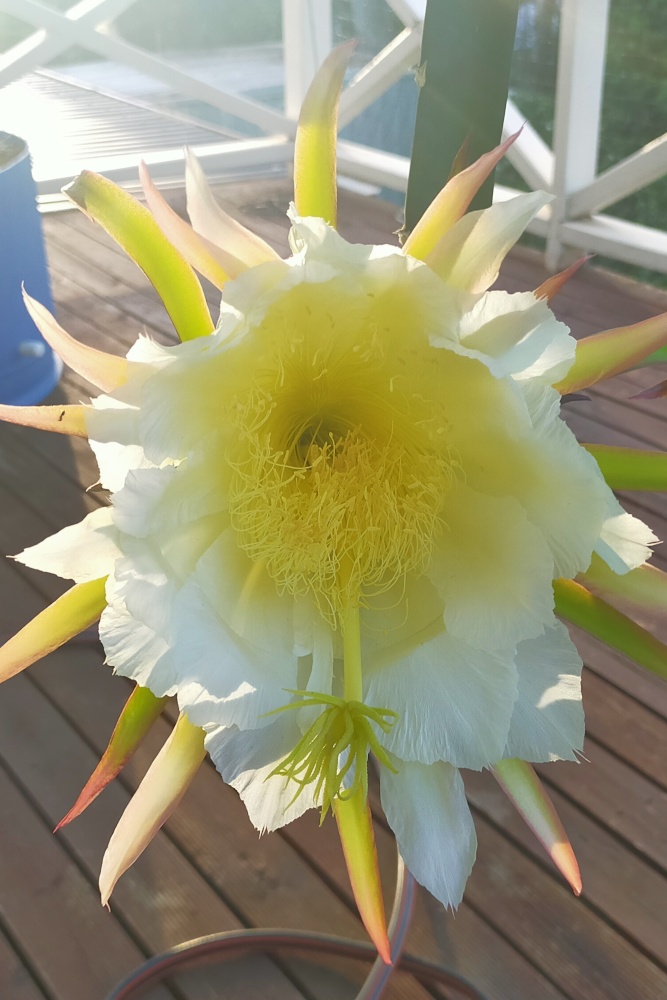
Fruit
The fruits of Sugar Dragon are very small, often under 100 grams. They take longer than a typical red or white variety to ripen, though far less than megalanthus varieties. Once they change colour, they quickly become loose; a sign they are ready to eat. The flavour is strongly that of berries, with a high sugar and water content. Many consider this to be one of the best tasting dragon fruits, though I think Malaysian Purple takes the crown for me.
